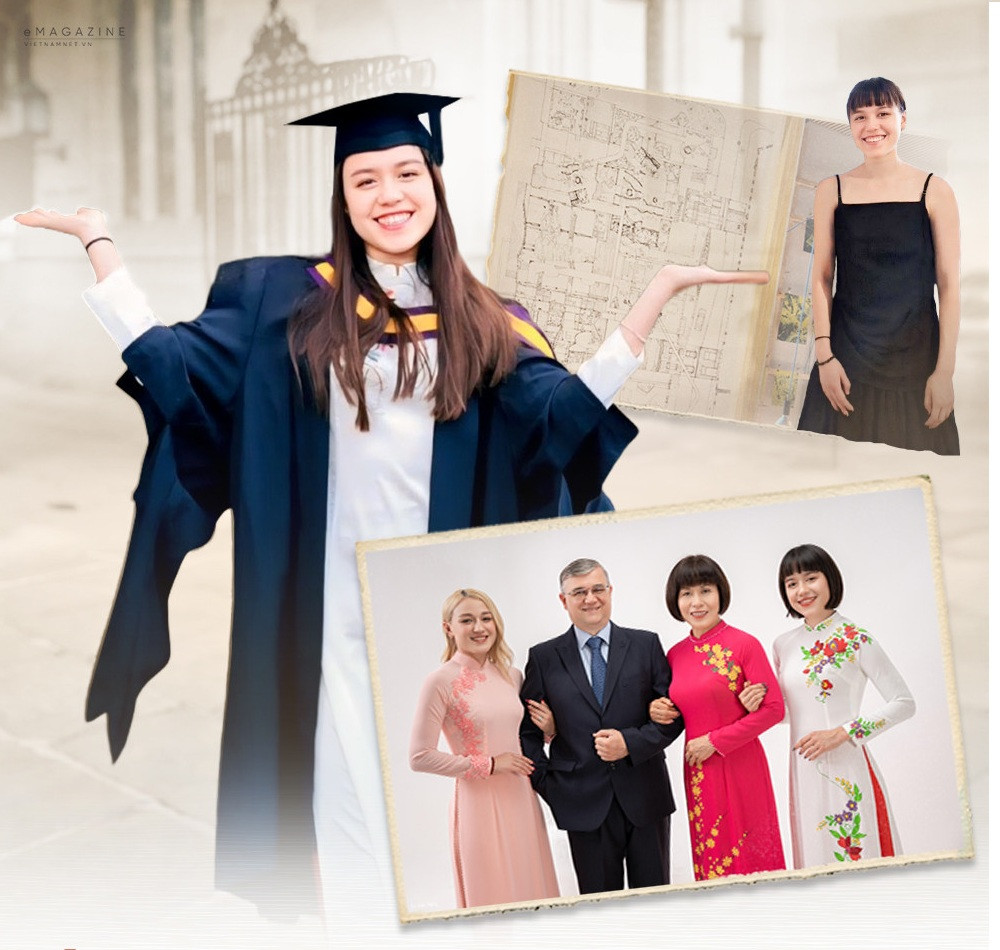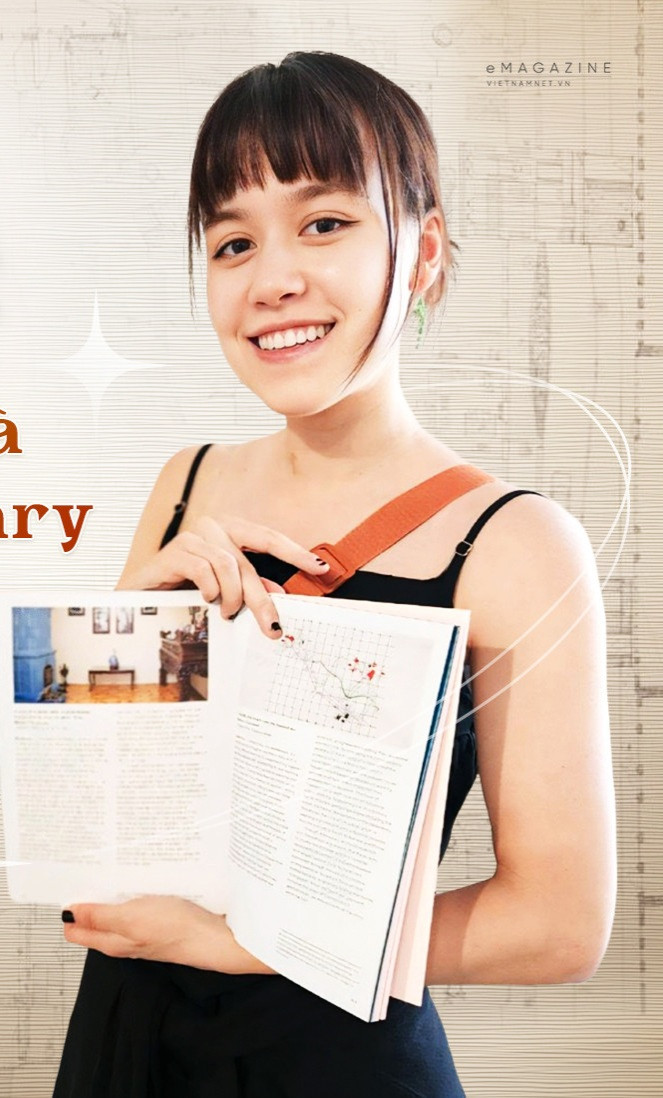Thuroczy Karolina My Lan, whose father is Hungarian and mother is Vietnamese, has successfully defended her master’s thesis in architecture. Her work was selected as one of the top five theses of the year to be published in the annual yearbook of The Bartlett School of Architecture, University College London (UCL), United Kingdom. Her thesis is titled "The home of a 5,000-mile journey."
What standards must a thesis meet to be selected for The Bartlett’s yearbook?

Each year, The Bartlett - UCL’s renowned school for architecture and the built environment - selects standout student projects across all five cohorts, comprising three undergraduate and two postgraduate programs, for its official yearbook. With roughly 1,700 students in total and 250-350 per cohort, having your thesis among the top five selected is an exceptional achievement.
These chosen projects must be unanimously rated as excellent by supervisors and faculty members responsible for design, content, technical, and conceptual elements. They often address innovative or socially relevant issues in architecture and environmental design and reflect deep insights or creative approaches.
Congratulations on having your thesis recognized among hundreds from such a prestigious institution. What is your thesis about?
I am truly happy and honored to see my master’s thesis ranked among the top five of my class. Through this project, I wanted to introduce more people to my homeland, Vietnam. Many were drawn to my thesis because the topic was quite unique and explored from a different cultural perspective.
My thesis, titled “The home of a 5,000-mile journey,” is based on my family home in Budapest, Hungary. My father is Hungarian, and my mother is Vietnamese. Despite living in Hungary for decades, my mother has always incorporated Vietnamese cultural elements into our home's interior. My father, too, has great affection for Vietnam and first visited the country in 1989 as one of Hungary’s earliest individual tourists.
Although I was born and raised in Hungary, my sister and I grew up immersed in Vietnamese traditions, language, and values, all thanks to our mother. We celebrated Vietnamese holidays such as Mid-Autumn Festival and Tet, and regularly visited our maternal family in Vietnam.
This strong bond with Vietnam has always inspired my academic work. In my first year, I designed a project titled “Conical space” featuring a leaf hat production area and an exhibition space. Last year, I designed a floating theater that could travel by river to serve communities in the Mekong Delta.
My deep connection to Vietnam inspired my master’s thesis, which explores the cultural intersection of Vietnamese and European traditions in domestic architecture. My professor strongly supported this direction, believing it to be highly relevant in today’s increasingly multicultural world.
That sounds fascinating. Could you tell us more about your thesis and its development process?

The title “The home of a 5,000-mile journey” reflects both the emotional significance of our Budapest home and the decades-long journey my mother took from Vietnam to Hungary, now extended through us to the UK.
To develop the thesis, I needed detailed materials about Vietnam’s past architecture and culture, which my mother generously provided. Our phone conversations lasted hours, discussing changes in her childhood home by West Lake in Hanoi, traditional Vietnamese values in home design, and interior decor trends over the years.
When I asked her why she remained committed to promoting Vietnamese culture, her answer deeply moved me: “Although I live in Hungary, I will always be Vietnamese. We must never forget where we come from.”
I also inquired about the goals of earlier generations like my grandparents, to which she replied: “They fought for independence. Today, Vietnamese people strive for global recognition.” I included this heartfelt conversation in the appendix to help readers understand Vietnam’s developmental journey.
My thesis features a detailed analysis of the East-West fusion in our family home, and a broader narrative on Vietnamese housing evolution, using my grandmother’s home in Hanoi as a case study. Chapters like “Global in one place” and “The road from Asia to Europe” highlight the value of multicultural design in contemporary architecture. I designed a house representing this cultural blending, suitable for today’s globalized society.
What aspect of your thesis are you most proud of?
It’s hard to pinpoint just one part, as I poured my heart into every detail. But perhaps what stands out most - something both my professor and my mother appreciated - was my recognition of how the “heart” of a Vietnamese home and a European home harmonize in one space: my mother’s office.
In that room, a traditional Dong Ky carved altar sits beside a Hungarian Zsolnay ceramic-tiled fireplace. In Vietnamese culture, the altar holds a sacred, central place in the home. In European tradition, the fireplace is where families gather, especially during holidays. Both symbolize the “heart” of the home. That photograph, which illustrates the blending of Dong Ky and Zsolnay craftsmanship, was selected for the school’s yearbook as a powerful symbol of cultural harmony.
Your thesis was also chosen as one of five to be presented at The Bartlett’s year-end exhibition. What message did you hope to convey during your presentation?
Yes, it was an incredible double joy to have my work featured in the school’s exhibition, running from June 21 to July 6. I wanted visitors to learn more about Vietnam’s transformation over the decades, and about its unique architectural and cultural identity. As my mother always says, “Do something meaningful for Vietnam, no matter how small - because it’s your origin, your homeland.”
A core message I aimed to convey is that cultural exchange and harmony make people more open and respectful of other traditions while also encouraging preservation of their own. Architects, especially, should embrace this awareness in our multicultural world.
My supervising professor, upon meeting my family at the exhibit, shared how honored she felt to guide this thesis, and praised the meaningful cultural bridge my parents have built.
Next summer, I plan to visit Vietnam again. I want to explore more about design and architecture there and connect with students and professionals at local architecture schools. I hope to apply my knowledge in Vietnam and introduce the country to my international colleagues. One thing is certain: Vietnam will always be part of my future projects.
Thai An